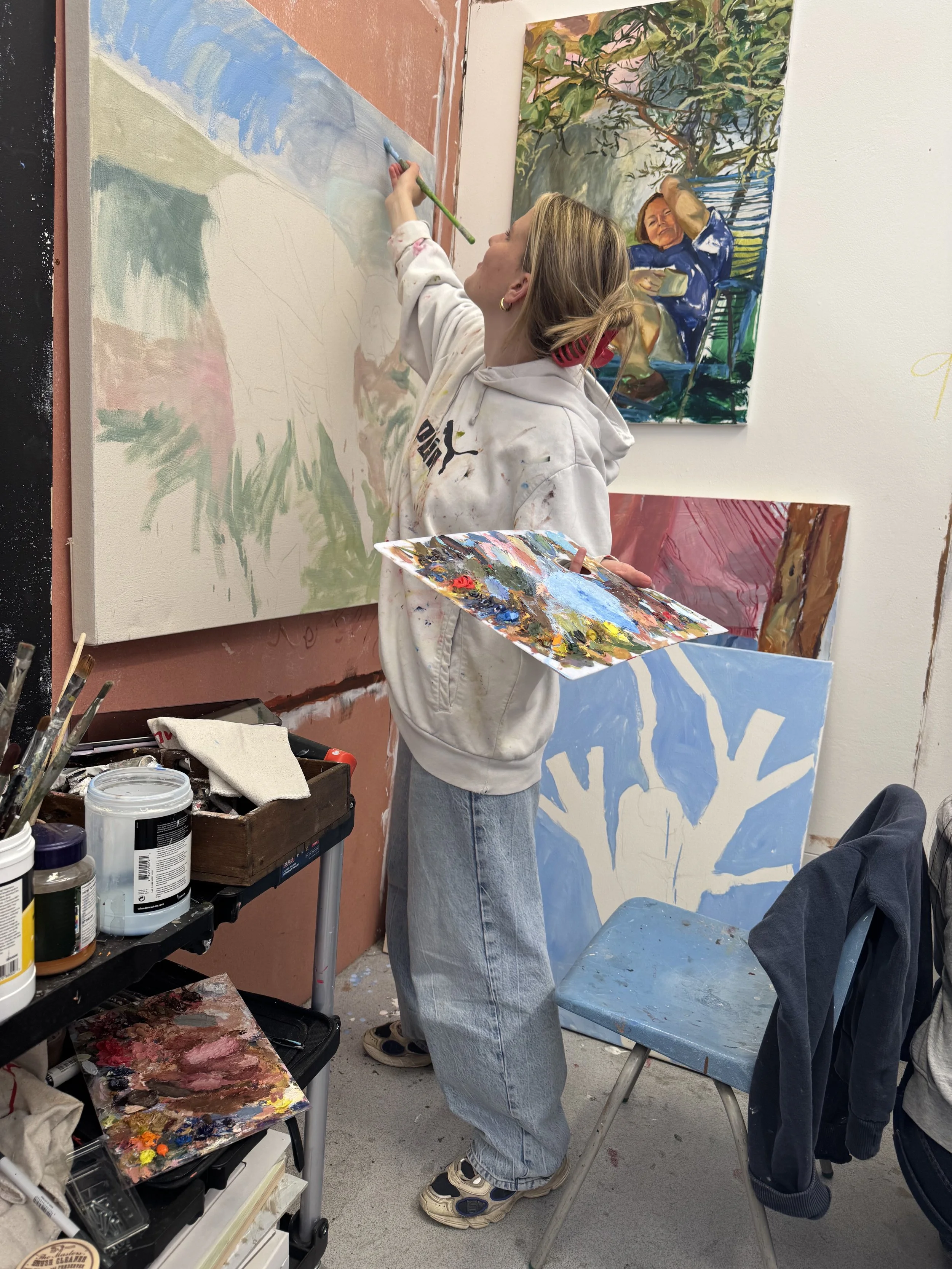Within her practice, Libby embraces the natural world and investigates human interactions with natural spaces. Whether that be sunbathing, gardening, climbing a tree or sitting in the park, Libby’s paintings home in on these small acts of connection with the earth.
Libby endeavours to explore the power of art within the narrative of environmentalism and contribute to the centuries’ long conversation of landscape painting, however within a new space: the current climate crisis. She questions whether landscape painting can be considered activist art. Libby is inspired by Rebecca Solnit’s contemplations on the power of art within the climate crisis: ‘To make us think of the consequences of our actions; to feel a part of all life on earth; to perceive the beauty of the natural world and our utter inseparability from it.’
She is greatly influenced by Gesler’s thoughts on ‘therapeutic landscapes’, expressing the positive effects of engaging with natural spaces. Libby is also inspired by Tim Ingold’s philosophy on landscape and embodiment, both being ever transforming and completely interconnected entities. Libby’s paintings exist in a liminal space, somewhere between fiction and truth. This emerges in her work through a considered balance of intuition and deliberation. Her process is shaped by extensive stages of photography, collage before painting and allowing space for the compositions to transform into the final version.
